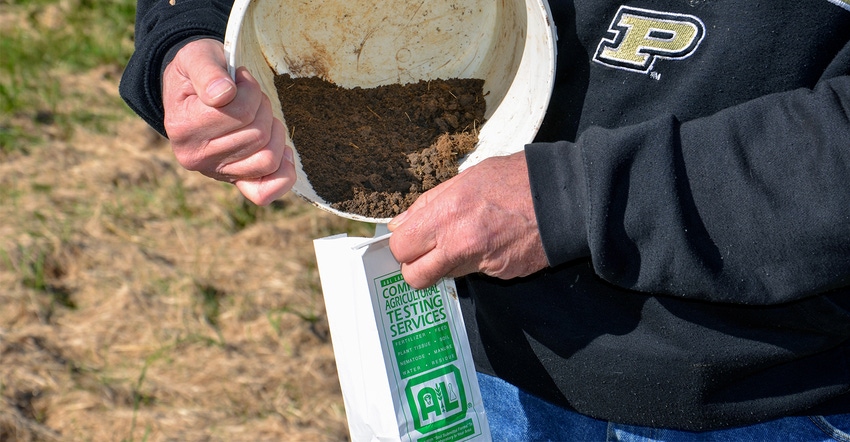
We soil-test fields every three years using a consultant. Most of our levels are in good shape. Is this a year we could not use the consultant to test? Finances are tight and something must give. What would we give up by not testing for one year? We could pick up the rotation next year.
Profit Panel members answering this question are: David Erickson, farmer, Altona, Ill.; Mark Evans, Purdue University Extension educator, Greencastle, Ind.; Steve Myers, farm manager, Busey Ag Resources, Leroy, Ill.; and Chris Parker, livestock and forage producer, Morgantown, Ind.
Erickson: Soil testing is relatively inexpensive. Eliminating it for a portion of your acres for one year will not generate much cost savings. Soil testing could easily be stretched to a four-year cycle with little impact on test results. The important thing is to develop a consistent plan that fits well into your crop rotation because that will allow for the most consistent results with improved reliability. Managing nutrient applications could equate to bigger cost savings than elimination of soil testing for one year.
Evans: A year without hiring a soils consultant should not be a huge financial liability if you as the operator are also paying attention. What is your relationship with your consultant? If you have let the consultant have the keys and the driver’s seat while you become a passenger, then you are certainly more dependent on the consultant. If you’ve maintained involvement with the consultant, then you should be fine. Just don’t let one year become two, three, four or more.
Another good option is to consider phosphorus and potassium levels in your fields. If soil-test levels are high or very high on either, then you could back off application in those fields. I wouldn’t recommend any reductions in nitrogen or lime. Skipping a year or using partial rates of P and K on very high-testing fields to cut short-term costs would make a lot of sense.
Myers: Systematic, periodic soil testing is a cornerstone of good management. To not test may have you playing catch-up in the long run. It could be even more serious if you “kick the can” down the road farther without testing. With that in mind, to miss one year of testing or to spread testing to a four-year cycle appears to be a reasonable response to a tight cash flow.
Parker: Yes, you could get by for a year without hiring a soils consultant. But my fear is that it would then be easier to do that again the following year, and the following year and so forth. My suggestion would be to reduce your P and/or K application rates if your soil-test levels show that you are in the high to very high range in either nutrient. I would not reduce nitrogen or lime applications, but you could utilize the soil “bank” of P and K. You could go with half rates this year, or you could skip an application for this year completely. This would help you temporarily reduce costs.
Summing up: Think through whether or not you can go a year without hiring a soils consultant very carefully before doing it. If your fields are high or very high in P and/or K, you may be able to save more by reducing or skipping P and/or K applications this fall.

About the Author(s)
You May Also Like




